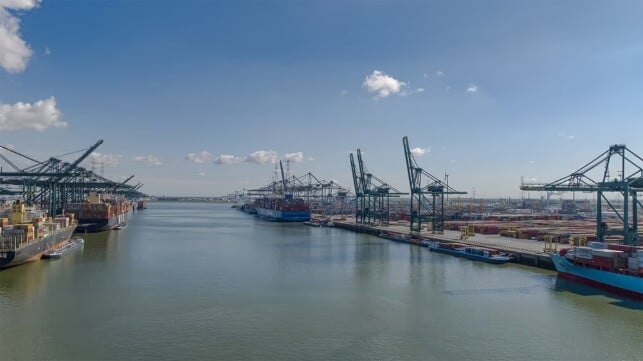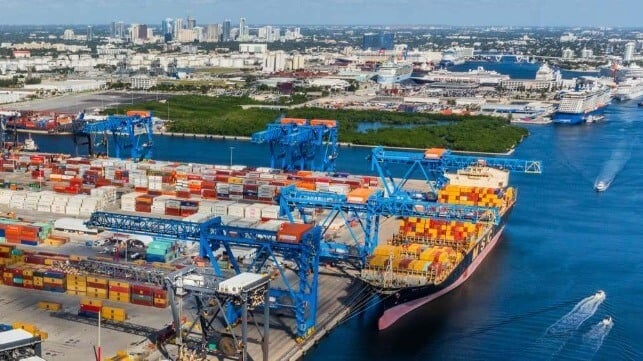In brief:
- A new “natural capital account” for Colombia’s Upper Sinú Basin calculates the economic value of its natural ecosystems’ erosion control services to the energy and water sectors at $100 million (1.7% of the region’s GDP). An aqueduct under consideration to support increased coastal tourism would increase the value by 12%.
- This is one of the first times outside Europe such an account has been created with locally validated models and data following the UN System of Environmental-Economic Accounting – Ecosystem Accounting framework.
- This paper’s methodology offers a practical way to develop and apply such accounts regionally, laying the groundwork for compensation programs that protect nature and support livelihoods.
The Sinú River in northwestern Colombia is a kind of bloodstream from which life emanates. Its heart lies within Paramillo National Park, where the river begins, moving through tropical rainforests and tropical dry forests before flowing down to the Caribbean coast of the country – enabling hydropower, agriculture, ranching, and drinking water supplies for cities and tourist destinations.
These benefits are under threat from deforestation and erosion in the Upper Sinú Basin, largely due to cattle ranching, illegal timber harvesting, and agricultural expansion. Loss of forests and vegetation causes sediment to build up in waterways, compromising downstream uses of the water and creating hardships for an already water-stressed region, like higher water fees and more frequent water shutoffs. To address this, the government of Colombia is implementing an ambitious agenda including a variety of climate- and biodiversity-related programs. Such programs include compensating landowners and resource users for restoring forests or for following management practices that maintain nature’s benefits, like keeping soil in place, and out of waterways. In the same context, the government also aims to support nature-oriented tourism along the coast through investments such as a potential new aqueduct, which would increase water availability and security by bringing in water from the Sinú River and reducing pressure on the underground aquifers currently in use in the area.
To better achieve these interconnected goals, the Colombian National Planning Department (DNP) is working with Stanford University’s Natural Capital Project to link upstream watersheds with downstream economic development through natural capital accounting. This approach systematically quantifies natural assets, the benefits they provide to people, and how those benefits change over time, in a way that aligns with other accounting systems used by governments.
“The appeal of a natural capital account is that it’s replicable and can be scaled, showing the status of nature’s benefits to people over time and potentially in response to different actions,” said Lisa Mandle, lead scientist and director of science-software integration at Stanford University’s Natural Capital Project (NatCap) and a lead author on a new paper about this effort, published in Communications Earth & Environment. “But these are relatively new forms of accounts. How to actually do it – and in policy-relevant ways – is still being worked out, and this is one of the first times it has been actually done outside of Europe, for this type of service, with this degree of validation.”
In the paper, a team from NatCap, the Pontifical Javeriana University in Bogotá, Utrecht University, and DNP document their co-development of a novel natural capital assessment and account for the Sinú Basin. The value of the ecosystems’ sediment retention services to the region’s energy and water sectors alone comes to $100 million, equivalent to 1.7% of the region’s GDP. The team also analyzed future scenarios, showing that if the country moves forward with the new aqueduct, it would increase the value of these services by 12% because more people would depend on those services to deliver clean water.
The new natural capital account specifically follows the rigorous United Nations System of Environmental-Economic Accounting – Ecosystem Accounting (UN SEEA EA) framework. About 33 countries have created such UN SEEA EA accounts. This is the first account in Colombia focused on flows of benefits to people, not just the physical extent of an ecosystem. It is also one of the first times local data and information were used to corroborate, or “calibrate,” the results for a sediment retention-focused account (rather than just relying on coarser, more general data). This makes it much more specific to the context and reliable for use in local and regional economic valuation and decision-making.
“The estimation of the biophysical and monetary values of ecosystem benefits in the Sinú Basin allows a direct comparison between the funds devoted to conservation and the economic outputs of these investments,” said Fabián Darío Villalba Pardo, a co-author on the paper from DNP’s Directorate of Environment and Sustainable Development. “This information also allows for comparison between usual investment budgets, for example in hard infrastructure, and the investments in green infrastructure.”
To create the assessment and account, the team talked with local stakeholders about how they currently rely on nature’s benefits (the “demand” for services), combining this with biophysical information about the ecosystems themselves (i.e., the supply). The work also involved calculating potential lost revenues from hydropower operators and water suppliers if ecosystems were not functioning properly in reducing sediment. These values can then inform specific policies and financial compensation for upstream stewardship that preserves them, such as the allocation of water user fees to watershed conservation or the development of government-supported “payment for ecosystem services” compensation programs.
“In many cases, technical methods involve a high level of scientific rigor but lack input from the actual users of ecosystem services. The SEEA framework applied in this project is a significant improvement in this context, and allows for the results to be used in better policies, suited to the specific situation of the municipalities involved,” said Villalba Pardo.
Starting downstream, then moving upstream…
This project emerged from years of collaboration and trust-building between NatCap and the Colombian government. An earlier natural capital assessment on the Gulf of Morrosquillo region, aiming to understand their proposed territorial development plan’s dependencies on nature, showed that the Upper Sinú Basin was key in providing a clean water supply for the municipalities and tourist destinations along the coast. Thus, the team hoped to better understand which areas upstream are most vital to preserving those benefits, as the government increased its investments in tourism and economic growth downstream.
“Ecosystem accounting is about two ends of a long chain,” said Héctor Angarita, senior scientist at NatCap and a lead author of the paper. “You have to calculate and connect both to find the realized, or actual, value: ecosystems are on one side, and people actually using their benefits are on the other.”
The team also peeled back the complex ways the locations of ecosystems and their beneficiaries matter, as do the value of different water-dependent economic sectors. For example, the forests are mainly higher up in the Sinú Basin, and their sediment retention primarily benefits hydropower operators, while savannas are lower in the basin and their retention primarily benefits water utilities. Thus while the two ecosystems retain approximately the same amount of sediment per acre, hydropower is a more lucrative industry, so the monetary value provided by forests is higher than savannas, in this case.
The study also showed that the planned aqueduct would increase the value of the services provided by upstream protected areas and mixed-use agricultural and cattle ranching lands simply because more people downstream would rely on them. So, the long-term success of the infrastructure investment would depend on better management of those areas.
“Starting from this analysis, we are now evaluating how to improve the public investment system in Colombia to incentivize the use of data on natural capital flows and stocks in the formulation of investment projects,” said Villalba Pardo.
Moving forward: financing for protected areas
“This work generated a lot of interest within DNP because it made a clear case for why certain features of the environment, especially protected areas, were so important as management strategies,” said Angarita.
In the next phase of this collaboration, part of a larger project with NatCap, three multilateral development banks, and 16 countries, the Colombia team (including both DNP, the National Department of Statistics, and the Inter-American Development Bank) focused on quantifying the benefits of protected areas in the Northeastern Andes region to priority economic sectors of several municipalities. They intend this to inform either the creation or the improvement of financial mechanisms that can fund nature protection in key areas.
Through this broader 3Ps effort, the Sinú Basin analysis was shared with other teams from Chile and the Philippines, as its methodology and approaches can be adapted to other places looking to create natural capital accounts. In Colombia, the results show clearly that the energy and water sectors have a significant interest in nature preservation and land management practices – in keeping the region’s “bloodstream” and its surrounding systems functioning properly. The analysis also shows how much work is involved in developing a natural capital account.
“The scalability of this approach is definitely challenging, but it is manageable,” said Angarita. “Once you start building this, you can be very modular and advance in pieces. Step-by-step, countries can produce these accounts.”
Additional authors on the paper are: Jaime Moreno (Pontificia Universidad Javeriana), Jesse A. Goldstein (NatCap), Sioux F. Melo L. (Utrecht University), Alejandra Echeverri (who was with NatCap at the time of this work and is now at the University of California, Berkeley), and Nicolás Rojas (who was with Colombia National Planning Department at the time of this work and is now is an advisor at Colombia House of Representatives).
This work was funded by the Gordon and Betty Moore Foundation.
The Natural Capital Project is based out of the Stanford Doerr School of Sustainability and its Woods Institute for the Environment, and the Stanford School of Humanities and Sciences’ Department of Biology. It is a global partnership of interdisciplinary researchers, professionals, and leaders: its core partners are the Chinese Academy of Sciences, the Royal Swedish Academy of Sciences, the Stockholm Resilience Centre, the University of Minnesota, Natural Capital Insights, The Nature Conservancy, and World Wildlife Fund. NatCap’s work is co-created and implemented through a network of more than 500 collaborators worldwide.
Journal
Communications Earth & Environment
Article Title
Natural capital accounting revealsecosystems’ role in water and energysecurity in Colombia’s Sinú Basin
Article Publication Date
21-Apr-2025




